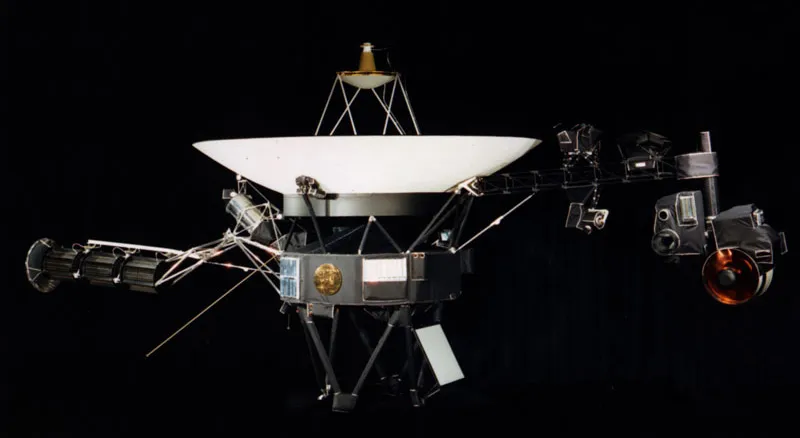The spacecraft uses its thrusters to stay pointed at Earth, but after 47 years in space some of the fuel tubes have become clogged.
Engineers working on NASA’s Voyager 1 probe have successfully mitigated an issue with the spacecraft’s thrusters, which keep the distant explorer pointed at Earth so that it can receive commands, send engineering data, and provide the unique science data it is gathering.
After 47 years, a fuel tube inside the thrusters has become clogged with silicon dioxide, a byproduct that appears with age from a rubber diaphragm in the spacecraft’s fuel tank. The clogging reduces how efficiently the thrusters can generate force. After weeks of careful planning, the team switched the spacecraft to a different set of thrusters.
The thrusters are fueled by liquid hydrazine, which is turned into gases and released in tens-of-milliseconds-long puffs to gently tilt the spacecraft’s antenna toward Earth. If the clogged thruster were healthy it would need to conduct about 40 of these short pulses per day.
Both Voyager probes feature three sets, or branches, of thrusters: two sets of attitude propulsion thrusters and one set of trajectory correction maneuver thrusters. During the mission’s planetary flybys, both types of thrusters were used for different purposes. But as Voyager 1 travels on an unchanging path out of the solar system, its thruster needs are simpler, and either thruster branch can be used to point the spacecraft at Earth.
In 2002 the mission’s engineering team, based at NASA’s Jet Propulsion Laboratory in Southern California, noticed some fuel tubes in the attitude propulsion thruster branch being used for pointing were clogging, so the team switched to the second branch. When that branch showed signs of clogging in 2018, the team switched to the trajectory correction maneuver thrusters and have been using that branch since then.
Now those trajectory correction thruster tubes are even more clogged than the original branches were when the team swapped them in 2018. The clogged tubes are located inside the thrusters and direct fuel to the catalyst beds, where it is turned into gases. (These are different than the fuel tubes that send hydrazine to the thrusters.) Where the tube opening was originally only 0.01 inches (0.25 millimeters) in diameter, the clogging has reduced it to 0.0015 inches (0.035 mm), or about half the width of a human hair. As a result, the team needed to switch back to one of the attitude propulsion thruster branches.


Why can’t they build my smart phone so it’s technically usable 47 years later?
Serious post: cost and shifting performance expectations make it impractical for consumer devices
Shit post: Because Nokia doesn’t make phones any more
Lol, right?
If spacecraft were built like consumer devices, they’d barely get to Mars before planned obsolescence turns them into flying bricks.
They can and do. Plenty of stuff is that old and still operational. 47 years from now, your phone will work just fine, assuming it was kept in a suitable environment. Although you’ll probably want to have pulled the battery; lithium battery packs can be picky about long-term storage.
I have this phone thats more than 47 years… :-D
Hopefully we’ll get better quality as the need for doubling the specs every X years slows down.
If you’re not replacing it for spec bumps, how do they make money?
That said, smart phones are so much stronger and durable than they were even 10yrs ago.
Yeah it’s the gartners hype cycle, like dumb phones for example, they were so bad and expensive (especially the monthly cost) just for calling. Now they’re cheaper than a doorstop.